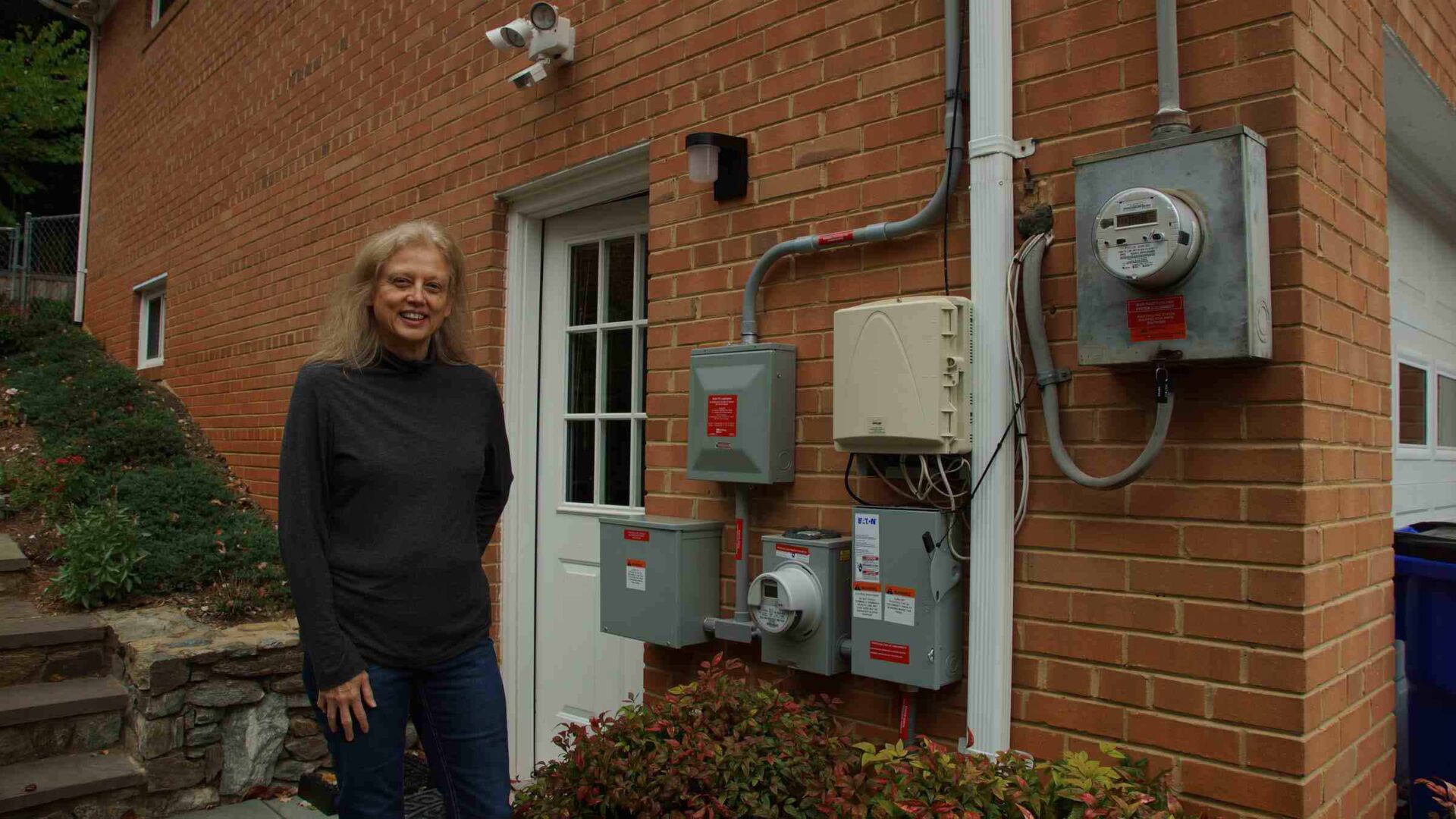Net metering in Arizona
- Factsheet

What is net metering?
For many years, net metering provided a fair credit to Arizona solar homeowners for the electricity their systems produced but they did not consume. For more information on how net metering works, see our page on net metering.
Net metering in Arizona
Today, net metering has largely been phased out in Arizona. This is due to a controversial decision by the Arizona Corporation Commission in 2016 and a separate but similarly controversial decision by the Salt River Project (SRP) Board of Directors in 2015. In some cases, rooftop solar customers in certain areas may still be eligible for net metering. Additionally, rooftop solar customers grandfathered into rates before these changes took effect are still able to receive net metering credits.
All new Arizona solar customers served by monopoly utilities such as Arizona Public Service (APS), Tucson Electric Power (TEP), and UniSource Energy Services (UNSE) are credited at a lower amount than was offered through net metering. This rate is known as an “export rate” and is adjusted each year.
New solar customers with Salt River Project (SRP) have multiple solar plans to choose from, one of which does offer net metering but is paired with a costly monthly demand charge. SRP solar customers can select a plan without a demand charge, and these plans will have a flat export rate instead of net metering.
Understanding the difference between net metering and the export rate can help you see how your utility bill comes together.
Go solar with confidence!
Our Go Solar Guide covers all the basic essentials.
The components of your electric bill
The way you are billed and credited for electricity can make or break the financial incentive to go solar. Earning credits through net metering or solar export rates can help pay for your solar panels by lowering your monthly utility bill. Using solar when power is most expensive also lowers your utility bill.
The components of your electric bill and the level of credit you receive as a customer with solar vary utility-by-utility. This section explains the various charges that go into your electric bill and how they may impact your financial return. For more specific information about your rates, contact your utility provider.
Volumetric charges
Volumetric charges cover what you pay each month based on how much electricity you use. This is tracked by your electric meter. When you go solar, you can offset these charges with the electricity you consume from your solar system.
Fixed charges
Fixed charges — also known as “monthly service charges” or “basic service charges” — are the part of your bill over which you have no control. Traditionally, fixed charges have been kept relatively low for residential customers, making your power bill based mostly on how much electricity you use.
Utilities across Arizona have sought to increase fixed charges in recent years.
This gives you less ability to control your energy bills. Salt River Project (SRP) customers now pay around $32 per month and APS customers pay around $12 per month in fixed charges before using any electricity.
Some utilities have balanced out fixed charge increases by lowering the volumetric cost of electricity. Because solar reduces your need for electricity from the utility, a high fixed charge limits the amount of money you can save with solar by purchasing less electricity from your utility.
Time-of-use charges
Nearly all Arizona utilities now offer “time-of-use” rate plans. Under these plans, the price of electricity is more expensive during “peak” hours and less expensive during “off-peak” hours.
Though times vary by utility, peak hours typically range from afternoon to early evening on weekdays (2 p.m. – 8 p.m. for SRP and 4 p.m – 7 p.m. for APS). These times coincide with periods of increased residential demand.
Electricity under these plans can cost 2-3 times more during peak hours than non-peak hours during summer. Solar energy and battery storage systems can help offset some of the expensive peak energy during these hours if they are designed appropriately. Some utilities also offer “super off-peak” rates. These rates are of special benefit to electric vehicle (EV) owners who charge their EV at home.
Demand charges
Demand charges are based on the highest amount of energy you draw at home during a particular time. Arizona utilities were some of the first in the country to institute demand charges for residential customers. Demand charges are designed to encourage customers to lower their peak energy usage (for example, by not running many major appliances simultaneously) when the overall demand for electricity is highest.
Utilities may offer rate plans that allow customers to pay less in volumetric or time-of-use charges if they agree to be subject to demand charges. For example, APS solar customers under its “Saver Choice Plus” or “Saver Choice Max” plans have demand charges based on the highest amount of on-peak power they draw during a 60-minute period each month. SRP solar customers under the “E-27” plan are charged based on the highest amount of on-peak power drawn during a 30-minute period each month.
Demand charges can make up a significant portion of your utility bill. If your plan includes a demand charge, be prepared to monitor your energy use and limit using multiple major appliances at once. Because many solar customers are being put on demand-based rates, many Arizona solar installers now offer “load-controlling technology”. This is technology like smart thermostats or hot water heaters. These help manage your energy use. SRP offers a $250 rebate for load-controlling equipment.
Solar export rates
Your utility develops its rate structure under the approval of a regulatory body. For the majority of Arizonans, this is the Arizona Corporation Commission. If you receive your electricity from a municipal utility, your locally elected officials serve this role. If you are part of an electric cooperative, an elected board sets the rate structure.
Just as utilities set the rates you pay for electricity, they’re also able to set the rate you are credited for exporting solar electricity back to the grid. Arizona’s major regulated utilities like APS and TEP offer solar customers an export rate to compensate for excess solar power sent to the grid. The export rate is a flat rate per/kWh and is unfortunately less than when net metering was available.
Under current rules from the Arizona Corporation Commission, the export rate at the time you go solar is locked in for 10 years. Each September or October, the export rate is scheduled to decrease by up to 10% and reset for new customers installing solar. Under these rules, the longer you wait to go solar, the less the export rate will be worth, and the less you will be credited for excess solar energy.
Current export rates until September 1, 2025
- APS: 6.857 cents per kilowatt-hour (kWh) generated
- TEP: 5.7 cents per kWh generated
- UNSE: 6.8 cents per kWh generated
- SRP: 2.81 cents per kWh generated, or net metering with demand charge
Go solar in Arizona!
Get the latest on solar straight to your inbox.
Fight for your solar rights.
Everyone has the right to go solar. Spread the sunshine nationwide and in your local community by taking action, joining events, and more.
